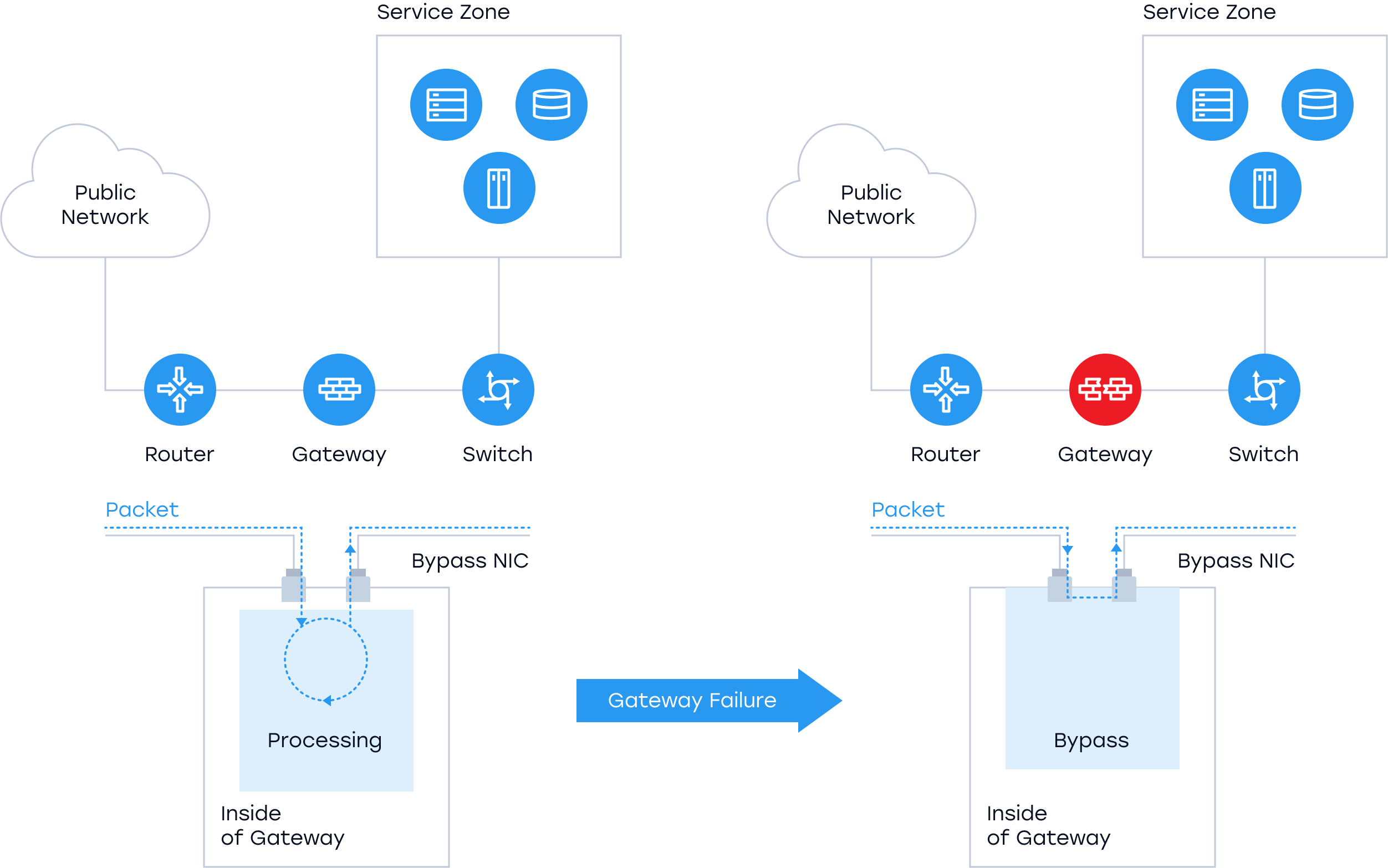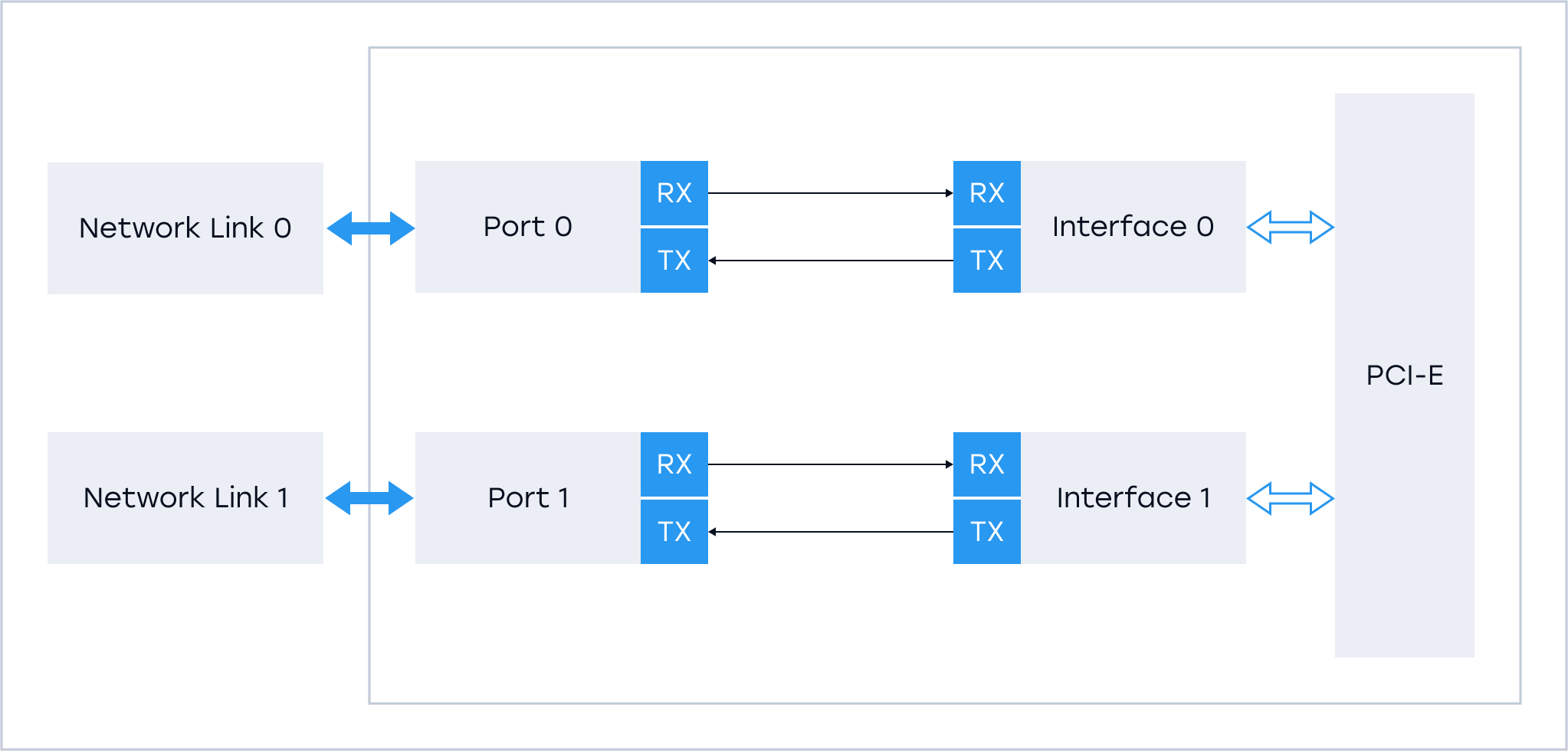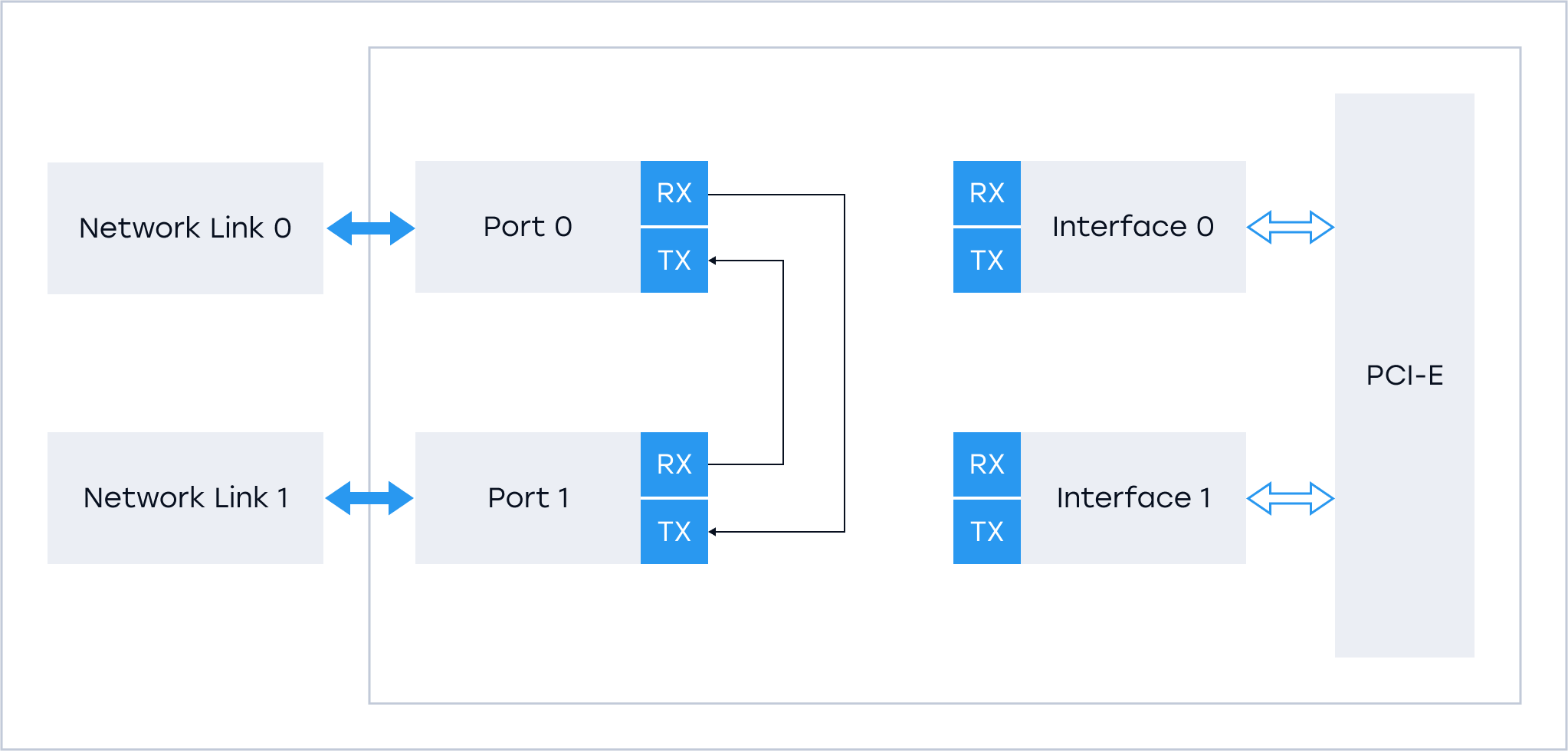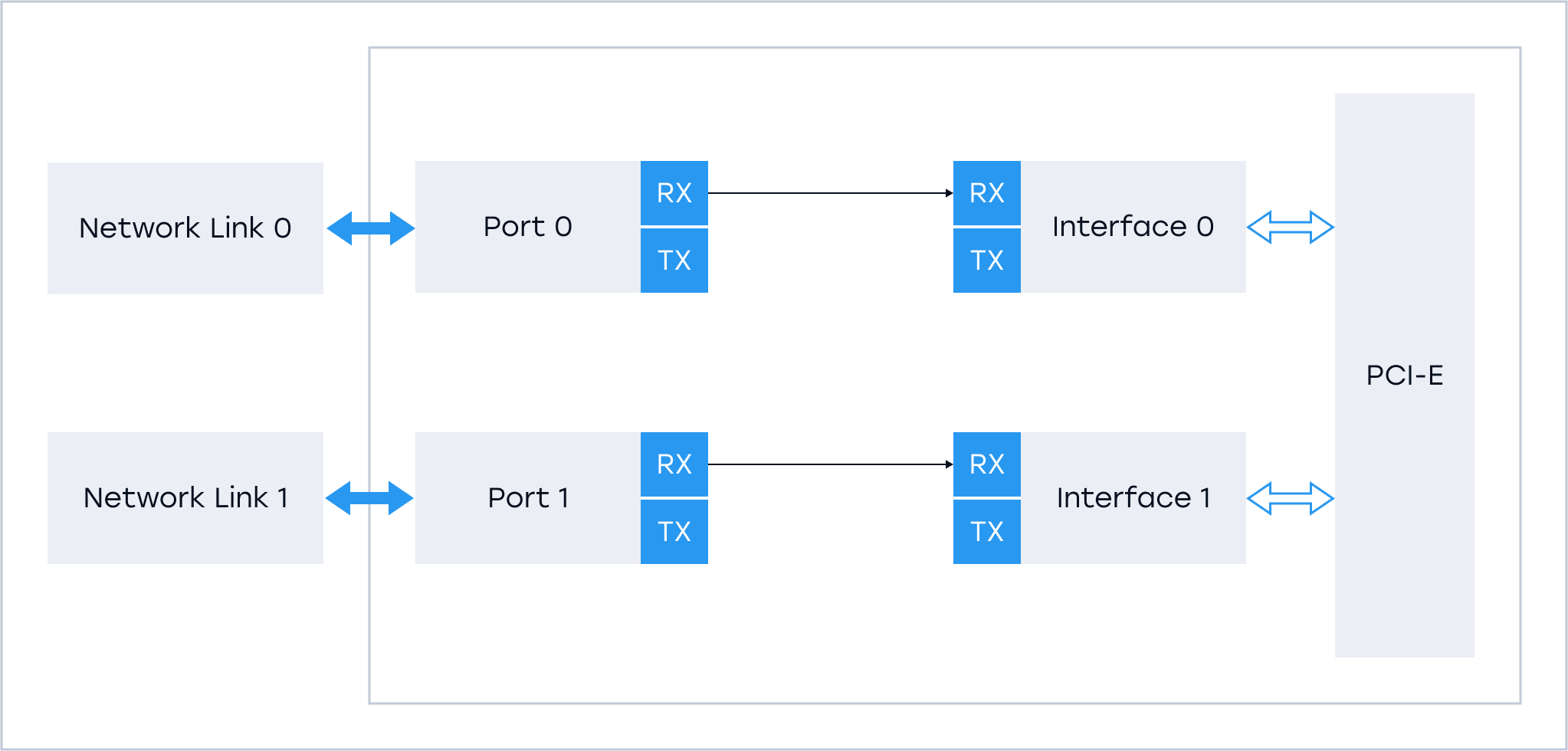How Bypass works
Bypass-supporting NICs have a switch between the network interface and a port, which in case of malfunction redirects traffic via the NIC controller.

WatchDog Timer responds to a critical event (frozen OS or software, power off, etc.) in about half a second and switches traffic on a physical level. Admins can also set up bypass functioning manually. Altogether there are 3 modes: Normal, Bypass, and Disconnect.
The modes
- In Normal mode the ports function as two separate network interfaces.
![Bypass scheme]()
- When Bypass mode is activated, the ports short-circuit each other, while traffic is not going to network interfaces – but directly between them. This scheme will function even if power is completely off.
![Bypass scheme 2]()
- In Disconnect mode TX links to interface disconnect, and NIC ceases to operate.
![Bypass scheme 3]()
Bypass usage scenarios
This functionality is added to systems whose shutdown is critical for an entire network infrastructure: Firewall, IPS, IDS, DPI, access servers, gateways, etc. The technology allows decreasing the number of situations, where subscribers have no Internet access. Bypass “excludes” only and exactly the function for which the malfunctioning device was responsible.
Yet another Bypass usage scenario is scheduled maintenance works on IT infrastructure. It makes the procedure convenient for specific engineers – as they need no tweaking with traffic redirection: simply to switch off a server is enough for conducting maintenance.
Stingray SG has an integrated Bypass. It also supports the external Bypass of any vendor.


